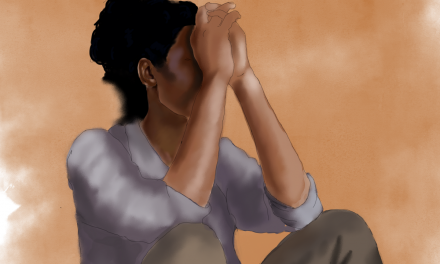Reports of sex trafficking are continuing to rise at both the national and local levels and minor victims are primarily being found online. Missouri, which ranks eighth in states with the highest rates of reported human trafficking cases, has especially seen an increase in minor sex trafficking reports in 2022 alone.
A recent KMBC report on the arrest of 32 people as part of a child sex trafficking investigation has pushed Missouri into the spotlight, naming Kansas City one of the top sex trafficking cities in the country. Synergy Services, a Missouri-based crisis center interviewed in the report, highlighted the need for improved education and communication among children and their caregivers, especially regarding body autonomy and online safety.
Helping children understand body safety, consent, and how to safely navigate the internet at a young age can help reduce the likelihood of exploitation by traffickers. Parents are encouraged to have these conversations as early as possible and continue to check in throughout developing and teenage years to help keep vulnerable minors safe from harm.
How Does Online Trafficking Work?
According to the 2021 Federal Trafficking Report, over half (57%) of all criminal trafficking cases involved minor victims, with the primary method of buying and recruiting victims occurring online. Examples of the platforms mainly used to recruit victims were social media platforms, web-based messaging apps, online chat rooms, dating apps, classified ads, or job boards. Trafficking recruiters use these platforms to extract information used to lure their victims in, typically by exploiting the child’s vulnerabilities.
According to the report, the top victim vulnerabilities in new trafficking cases included:
- Having run away from home (64%).
- Being in the foster care system (25%).
- Having been previously trafficked (18%).
- Substance use disorders (11%).
- Homelessness (9%).
- Undocumented immigration status (7%).
- Poverty or financial insecurity (2%).
For example, a recruiter in an online chat room or on social media platforms may pose as a concerned peer who offers a safe space for the minor to open up about a problem at home. The recruiter then offers a solution – money, a job, a place to sleep, substances, companionship, romance, etc. – and the minor accepts, unaware of the potential danger.
Parents should be aware of their children’s vulnerabilities and the ways in which they might be exploited by others. Because so many of these vulnerabilities involve whether they have a safe, stable home and a feeling of security related to financial and documented status, preventing minor trafficking begins with addressing the social determinants of health affecting their children and their living situation.
If children feel safe and secure at home and around their family, and either do not engage in substance use or are receiving support from a trusted adult, they are less likely to seek out a new “friend” to help obtain some of these needs. However, being involved in the online activities of minors is still important to ensure they are aware of potential danger and doing what they can to protect themselves from exploitation.
As internet access and use continues to be popularized among younger children, it’s important for parents to be aware of what their children see and hear, who they meet, and what they share about themselves online. Though some internet safety laws in place are designed to protect minors from sharing too much personal information, they are not the sole solution.
Many internet service providers offer parent-control options to limit children’s access to adult material or certain websites. However, social media platforms are becoming increasingly common among children and young teens and can be difficult to control if being accessed away from home, such as at school or a friend’s house. Because of this, parents are still encouraged to teach online safety guidelines for their children to follow.
Basic guidelines for safe online use for minors include:
- Never post or trade personal pictures.
- Never reveal personal information such as an address, phone number, school name, or location.
- Use only a screen name, not a real name, and don’t share passwords (unless with a parent).
- Never agree to get together with a person met online without parental approval and/or supervision.
- Never respond to a threatening email, message, post, or text.
- Always tell a parent or trusted adult about any communication or conversation that was scary, hurtful, or felt “off.”
Parents can also lessen the chances of inappropriate online conduct by keeping the computer in a common area where its use can be monitored, as well as finding out how internet use is monitored in school, at friends’ houses, at the library, and other places minors may have unsupervised access to computers.
Teaching Body Safety to Children
Building trust and keeping an open line of communication with children increases the chances of a minor speaking up about any problems experienced online. It’s important to have conversations about online safety, as well as body safety, early on so they can recognize if something inappropriate has occurred and who they can trust to turn to for help.
The Mama Bear Effect offers five key body safety rules recommended for parents to introduce to children by age five that help develop trust, open communication, and understanding of consent from their developmental and teenage years through adulthood:
The five rules of body safety are:
- You are the boss of your body. Children should know they are not required to tolerate or allow unwanted touches, even from family members. Many cases of child sexual abuse and trafficking happen at the hands of a family member, whether biological or within the foster system. Teaching children bodily autonomy helps them understand consent and recognize when it is inappropriate or unsafe to touch or be touched by others.
- Use proper names for body parts. This gives children the proper language to use if they are touched inappropriately or asked to share inappropriate photos, with no room for misunderstanding. Some predators may use pet names for different areas of the body to make sharing private parts “fun” or sound harmless. Experts suggest using anatomically correct names for private parts and if the child begins using a nickname, asking where they heard it used.
- Private parts are not for sharing. Although young children and toddlers may not be concerned about privacy developmentally, it’s important to find everyday opportunities to reinforce the notion that privacy is important. For example, while helping their child change, parents can remind them that if someone asks to enter the room, to get their clothes on quickly because private parts are to remain private.
- No keeping secrets. Because it can be difficult for survivors of trauma and sexual abuse to disclose their experiences, it’s important to instill in children early on that they should not be asked or expected to keep secrets and that they will be supported and believed if something happens. Oftentimes, children and teenagers avoid disclosing secrets to their parents out of fear of the consequences. To combat this, it should be underscored that their safety comes first and will be addressed before any punishments are doled out. This rule also encourages them to disclose any secrets they’ve been asked to keep by other family members or adults.
- Create a body safety circle. Minors of any age should have a circle of three to five trusted adults they can talk to about body safety. It is recommended that at least one of these adults be a non-family member (such as a coach, teacher, or babysitter) and that they all have frequent contact with the child. The unfortunate reality is that children may not be comfortable talking openly with their primary caregiver – or are being exploited by them – and will benefit from having a circle of safe people to confide in.
Privacy and consent are especially important to reinforce among other parents and adults with the increasing number of online-recruited trafficking cases. Previously, it has been fairly normalized to take photos of children while they are in the bath, nude, or wearing a diaper or underwear — parents simply want to capture memories of their little ones. However, doing so directly negates any attempts at promoting consent and autonomy among children and sharing these photos can put children at risk for online predators and traffickers seeking new victims.
Parents are also warned to be mindful of who is allowed to bathe children as well as request body safety check-ins from their children. Many predators who are part of or close to the family will use bath time as an easily given chance to abuse a child without raising suspicion. Checking in with a child after they’ve spent alone time with another person offers an opportunity for them to speak up about any feelings of unsafety or danger and can help build trust and communication over time.
Unfortunately, the opposite of these rules has historically been normalized (i.e., requiring children to hug and kiss their grandparents goodbye, teaching about private parts using pet names, etc.). Now, parents are encouraged to not only practice these rules with their children, but also extend this education to their child’s “safety circle.”
By creating a network of trusted adults equipped with the same knowledge, focused on promoting body and internet safety and honest communication among children, parents can effectively reduce the risk of trafficking and exploiting minors in their communities.
Spotting Signs of Trafficking
In many human trafficking cases, victims are unaware of the fact they are being trafficked, especially in the beginning stages, making it unlikely for them to ask for help outright. Over time, however, they are coerced into remaining complicit. They may be aware of their situation but remain defensive of their trafficker or dismiss concern and attempts to intervene by family and friends, especially if they believe their financial or physical safety would be threatened by speaking up.
According to the 2021 Federal Human Trafficking Report, methods of coercion in cases involving only minor victims included:
- Withholding pay (62%).
- Rape or sexual abuse (28%).
- Inducing/exploiting substance addiction (28%).
- Physical abuse (24%).
- Threats of physical abuse (24%).
- Brandishing weapons (20%).
- Fraudulent representation of romantic relationships (16%).
There are several tell-tale signs to spot trafficking, including signs of trauma or abuse, substance dependency, or more obvious signs such as brands or tattoos. Other potential signs of trafficking that may raise concern among parents and caregivers include:
- Their child is newly showered with gifts or money or otherwise becomes involved in an overwhelming, fast-moving, and/or asymmetric (i.e., large difference in age) romantic relationship.
- Their child is a frequent runaway and is staying with someone who is not their parent or a trusted guardian.
- Their child is developing a friendship or relationship that seems too close with someone they know solely on social media.
- Their child is offered a job opportunity that seems too good to be true, is made to pay fees for the opportunity to work a particular job, or is required to sign a contract in a language they can’t read.
- Their child is recruited for an opportunity that requires them to move far away but is provided with little details or unanswered questions.
Warning signs of potentially inappropriate online activity specifically can include:
- Spending long hours online, especially at night.
- Receiving phone calls from people the parents do not know.
- Unsolicited gifts arriving in the mail.
- Children suddenly turning off the computer or hiding a phone or tablet when parents enter the room.
- Withdrawal from family life.
- Reluctance to discuss online activities.
Because coercion can make it difficult — and in some cases impossible — for the victim to admit to being trafficked or ask for help, proactive communication and prevention efforts are invaluable in the fight to end human trafficking. With the number of online trafficking cases ever-increasing, especially throughout the COVID-19 pandemic, it is crucial for parents and caregivers to encourage open communication, and both teach and follow body and internet safety guidelines.
Resources for Human Trafficking Reporting and More Information
Trafficking victims may not understand they are being trafficked and may shut down when asked directly if they are a victim or if someone attempts to force a change. It’s important to handle this delicately and sensitively with the victim, as well as report any suspicion of human trafficking or sexual exploitation and follow professional advice for next steps.
Incidence of human trafficking, with or without definitive proof, can be reported several ways:
- To report an immediate emergency as it’s happening, call 911 or the local police department.
- To report suspected incidence of human trafficking, including online sexual exploitation, call the National Center for Missing and Exploited Children hotline: 1.800.843.5678 or submit a tip online at https://www.missingkids.org/gethelpnow/cybertipline
- To speak to professional crisis counselors at the Childhelp National Child Abuse Hotline who can connect parents with a local number to report sexual exploitation or abuse of a minor, call 1.800.422.4453.
- To report suspected trafficking crimes, get help, or learn more about human trafficking from a nongovernmental organization, call the National Human Trafficking Resource Center 24/7 hotline at 1.888.373.7888, text HELP or INFO to 233733, or submit a tip online at https://humantraffickinghotline.org/
For more information on human trafficking and prevention efforts in Missouri, visit the following resources:








